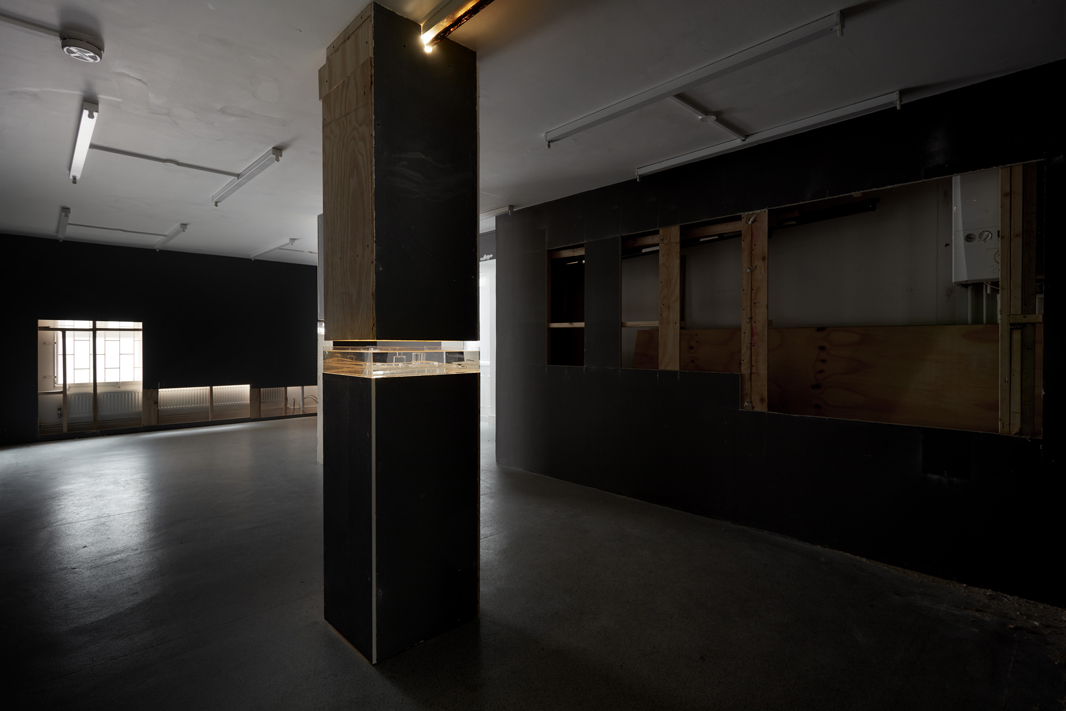Compression & the song, 2021
audio description of exhibition:








A Dolomite Crystal emerges from a block of Marble almost two hundred years after the block became façade, and about four hundred and eighty million years after its metamorphosis during the formation of the Appalachian mountains.
Extracted from the Earth by bodies extracted from society by the State*, the block is just one piece of a monument that slowly releases its saccharoidal edge into the world.
Toppled or being toppled. Bronze lumps like Ozymandias rolled into the sea only to be dredged out by city councils and others who hire conservators to polish graffiti and place relics in glass cabinets with lots of words for all to see.
Solidity is only aggregate held in place for a geological instant, and everything on Earth is permeable to a varying degree. We keep on making holes, filling holes, but the ground is moving too. A rock slide, a run-down – a show by – atmospheric pressure, magnetic currents, lunar tides and churning magma.
*[Sing Sing Correctional Facility in New York (opened 1826) and HM Prison Portland in Dorset UK (opened 1848) were both constructed on quarry sites using unpaid penal labour. Inmates were tasked first with building their own prisons, marking the beginnings of the prison-industrial complex. Marble extracted at Sing Sing was used in various buildings and monuments in Manhattan, including Federal Hall on Wall Street and Grace Church on Broadway. In Dorset, England; the Verne Citadel and the Portland Breakwater, built to protect England from invasion, were constructed by convicts who were eventually ‘released’ to Australia.]
I crumble soil in my hands and a rat skeleton falls apart in my fingers. I pick a perfect sun-bleached jawbone out of the dust and put it in my pocket.
The sun breaks plastic down slowly into microscopic plastic aggregate that is suspended everywhere for ‘lifetimes’. (Geological time is edgeless)
“…and where is your edge?” ask the three hundred and eighty trillion viruses contained in what I consider to be me.
I study new edges of old places as I walk through them with many others. We use voices, hands and feet to hold space and take time, often we sit down and listen. I amalgamate these and other edges I look at on screens to make these transparent cuboid places that are not entirely fiction, not all fact.






I gather pieces of clear acrylic (perspex or plexi) from local fabricators’ scrap bins and sidewalks. Clear plastic used in the minimalist notation of an edge, the temporary window, the pass-thru, the sneeze-guard.
I make dimensional drawings with cardboard because I cannot shift scale in two dimensions. I cut each acrylic piece on a bandsaw and sand and sand and sand. There are so many edges! I wear a mask with special filters so none of the edge-dust gets into my lungs. I hold each edge together and carefully inject into the microscopic gap a chemical that melts the edges, welding them into one piece. I leave the different parts (wall, pedestal, stairs etc.) separate so when I tip the box that holds all the welded pieces to one side they all slide over in a jumble.
From the beginning I imagine them as containers for an unknown liquid. Each one an ‘inert’ system, like a cryogenic tank. I fill one up with water, then dirty the water with sludge. I try pond water, rain water, river water. Drain it out. I find some mineral oil in a tractor supply store and discover it is a byproduct of petroleum distillation from crude oil and has many uses, including being the filling inside the radiator that I hunch over all winter.
When I pour it in, the acrylic edges get confused. I can see with my eyes what’s happening but when I send people the pictures on my phone they ask for “a better image.” I think maybe the mineral oil has similar refractive properties to acrylic, meaning, the hard internal edges become volumes, reflections happen within reflections.
I cut a piece of plasterboard out of my wall and build a column up from the floor and down from the ceiling. In the middle of the column is a slice where I slot in the oil-filled tank like a slide into a slide projector. I clip a lamp to the top of the column pointing down into the hollow and switch all the lights off. The surface of the oil quivers. As the light moves through the moving oil a projection of liquid light ripples inside the column.